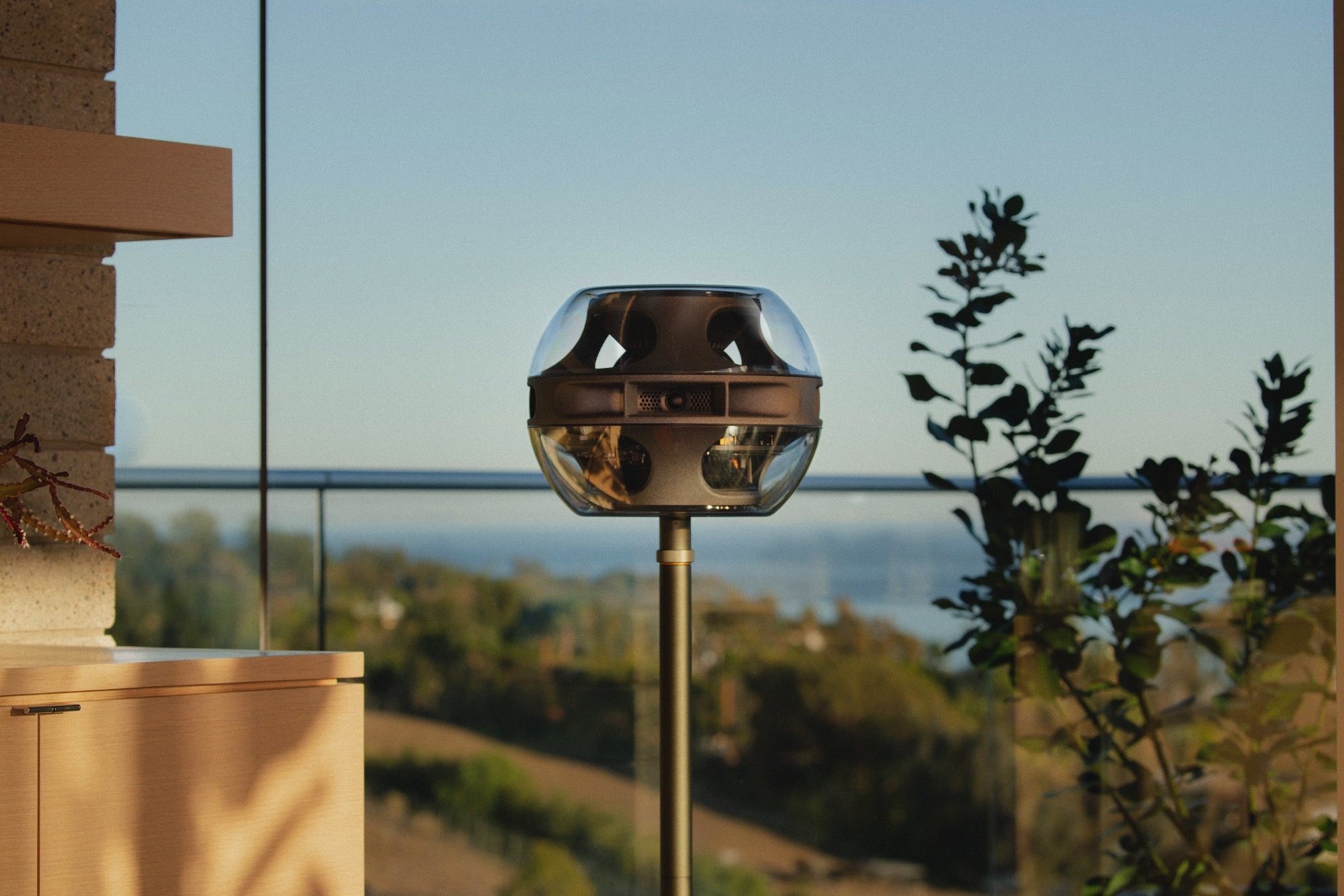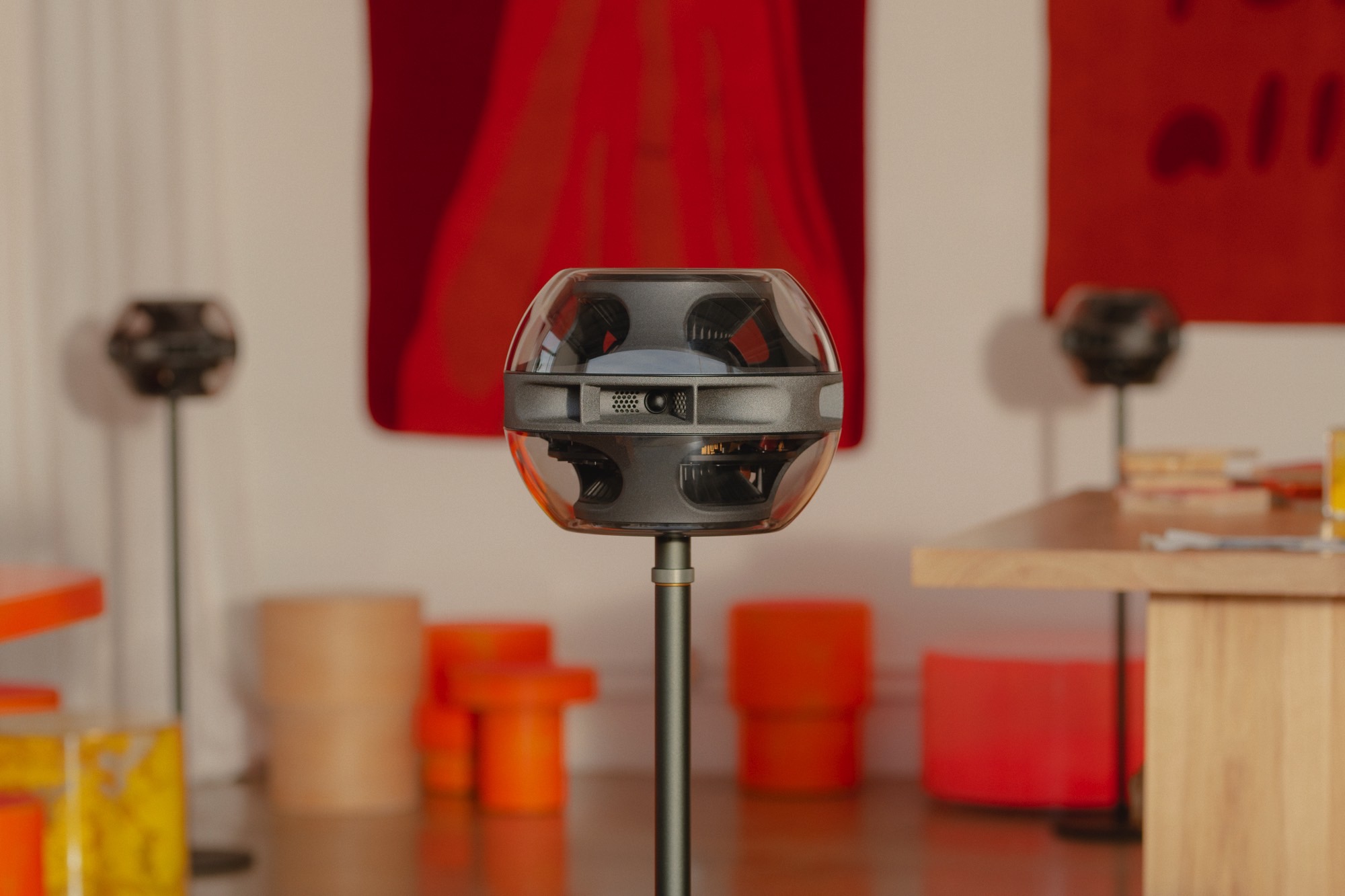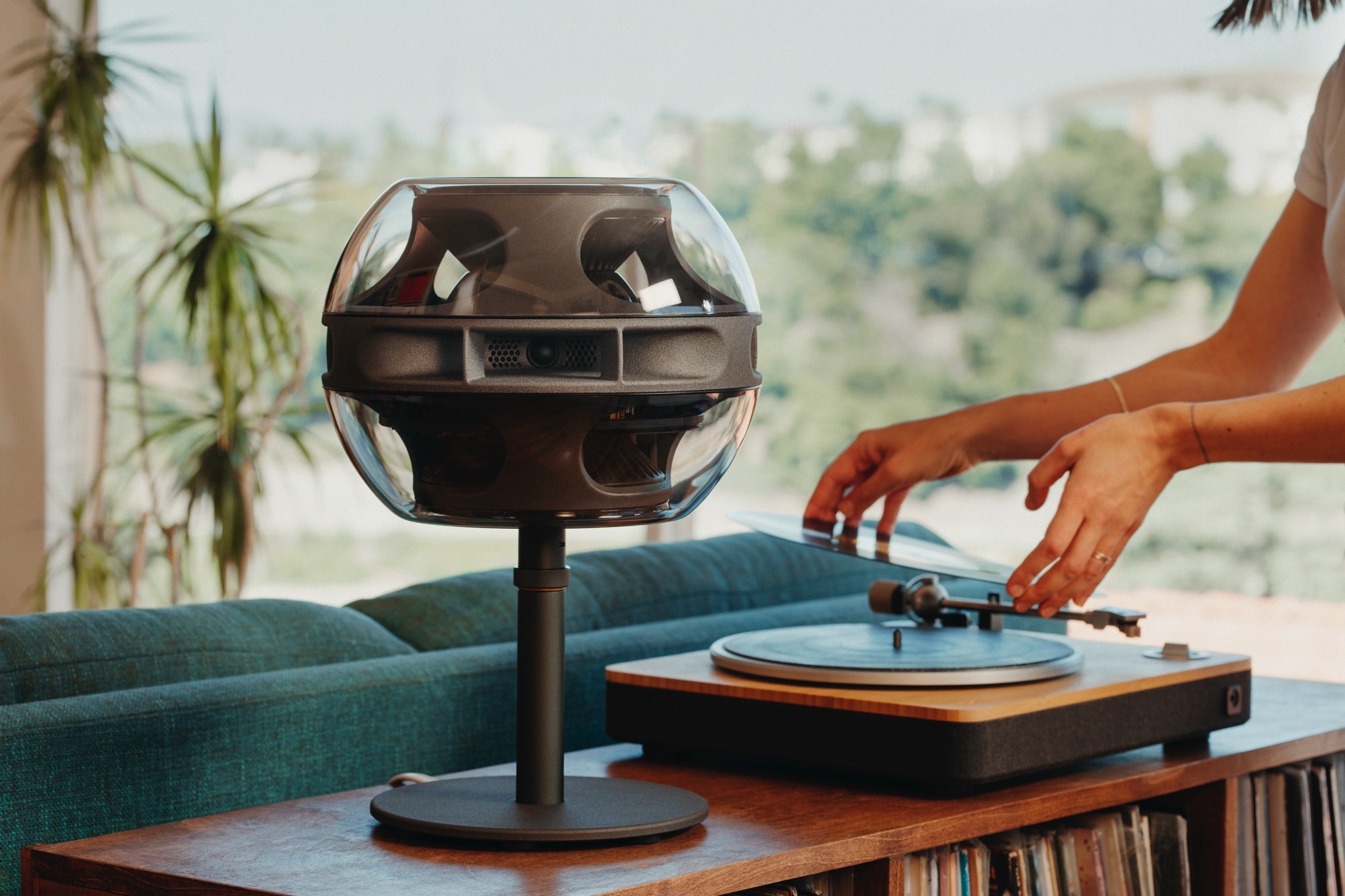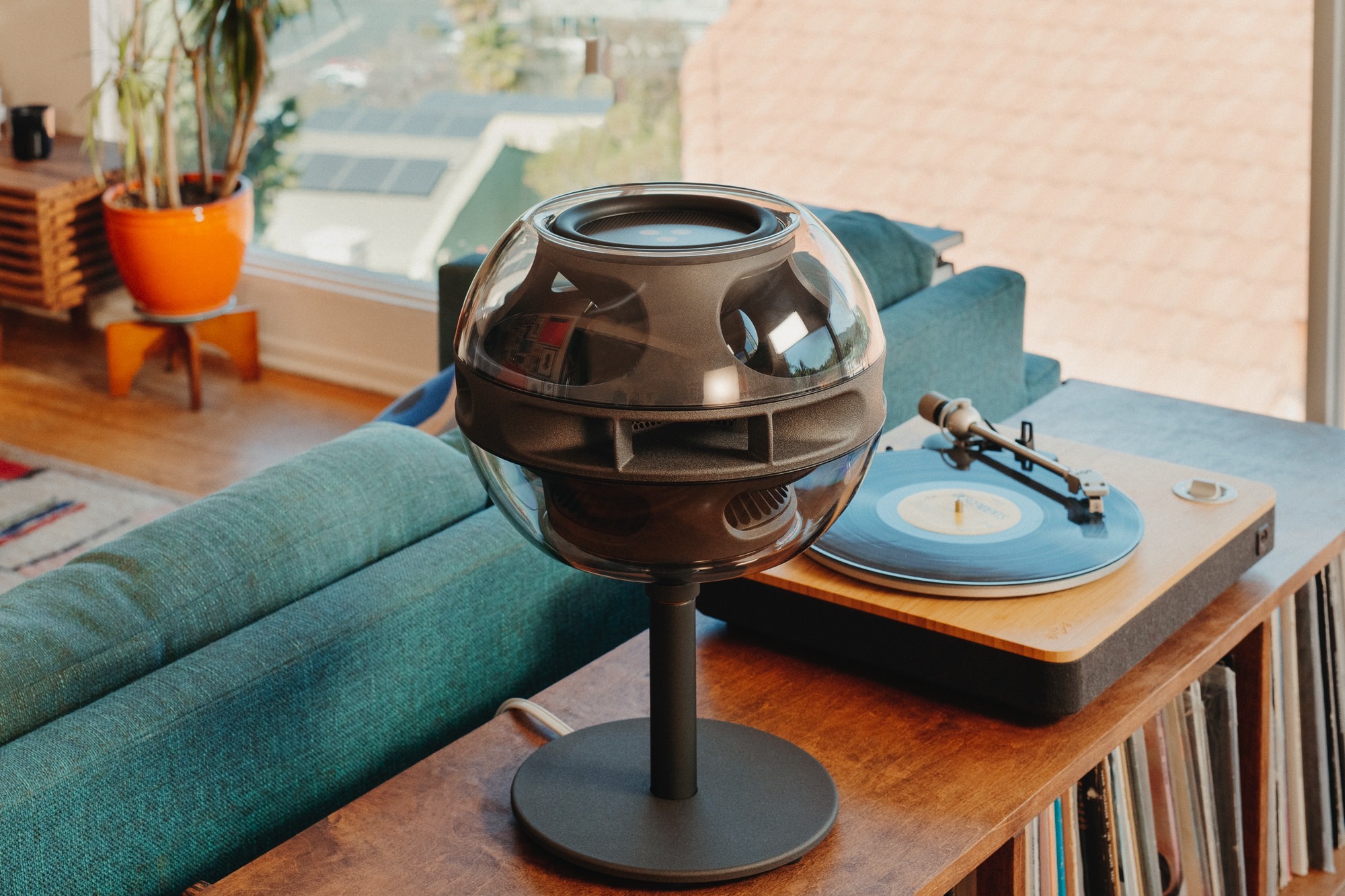At Digital Trends, we’ve seen our fair share of wild and crazy speaker designs, but there’s always room for something new. Case in point: Syng’s Cell Alpha speakers. They’re wireless, they project sound in a spherical and immersive pattern, and at a starting price of $1,800 for the tabletop model, they won’t be an impulse purchase for most folks.

Syng is a new audio brand co-founded by Christopher Stringer, who spent two decades at Apple doing industrial design on the company’s most iconic products, and Damon Way, an investor and entrepreneur who is best known for co-founding DC Shoes with Ken Block.
The Cell Alpha is Syng’s first product. Inside the transparent, spherical speaker is a series of drivers: An upward-firing subwoofer, a downward-firing subwoofer, a trio of midrange drivers, and an element that Syng calls a “triphone,” which Syng describes as a three-horn system that projects sound “with pinpoint accuracy.” The triphone is at the core of the Cell Alpha’s signature feature, known as Triphonic sound. What is that, exactly?
“This object-based sonic architecture allows you to paint sound around you: Place it wherever you want, move it, shrink it, magnify it, and layer it — or let the Cell handle it for you. Triphonic understands what the artist wants you to hear, accurately spatializes it for your room, and always keeps the sound centered around you,” the company’s press material says.
It’s a bit tough to get a true sense of what this Triphonic sound is all about (like many audio advancements, they need to be heard, not described), but Syng describes how it changes depending on how many Cell Alphas are in a single space.
One Cell Alpha creates a “room-filling sound field.” Two of these speakers can be placed in any location and Syng says that they will work together to create a singular sound field. Three Cell Alphas is considered optimal, however, and produces a “completely immersive sound field […] with complete spatial control and total envelopment.”
This kind of promotional language fills the company’s website, but there’s no mention of the wireless technology being used, which audio formats are supported by the speakers, or what kind of power and amplification is involved.
What we do know is that the speakers are controlled from a smartphone app, they’re capable of streaming from services like Spotify, and you can create multiroom setups, with different music playing in each room.
Speakers that project sound in a 360-degree or 3D pattern have become trendy in the last few years. Apple’s now-defunct HomePod had a circular driver arrangement, Amazon’s Echo Studio has a similar design, and Sony is trying to popularize its 360 Reality Audio format through wireless speakers like the SRS-RA5000.








